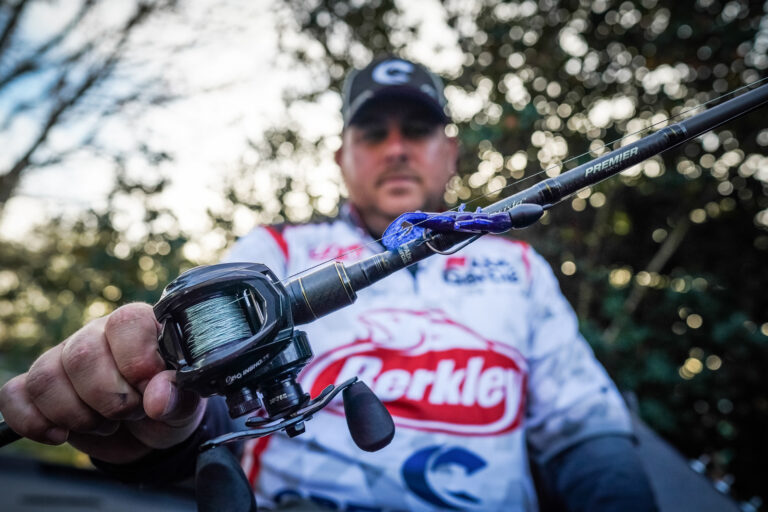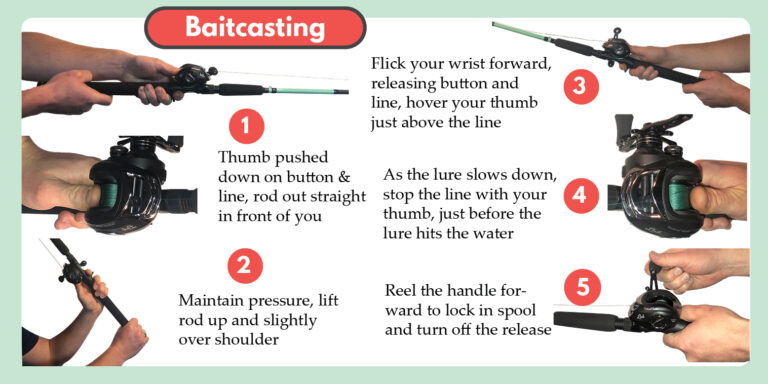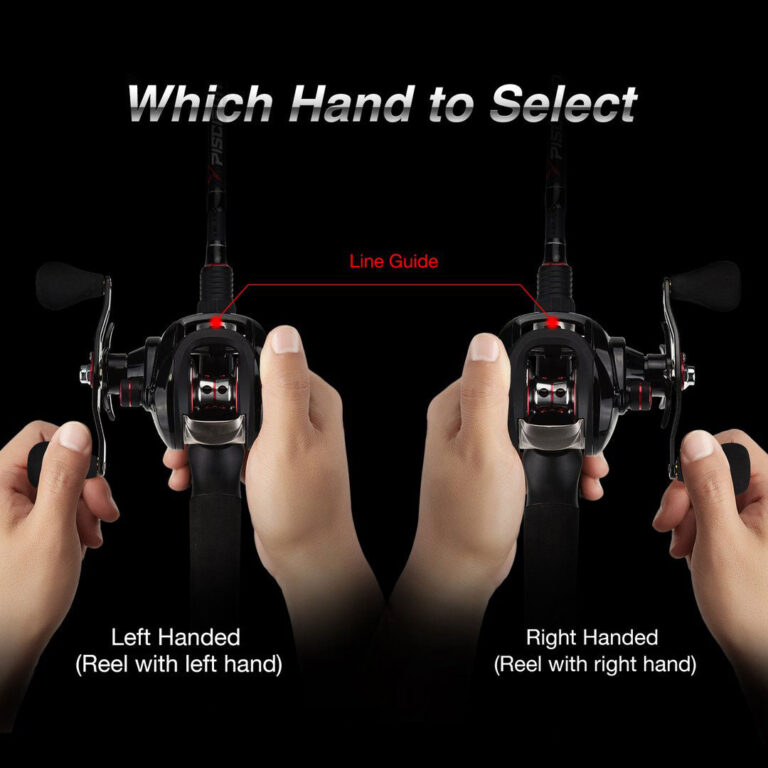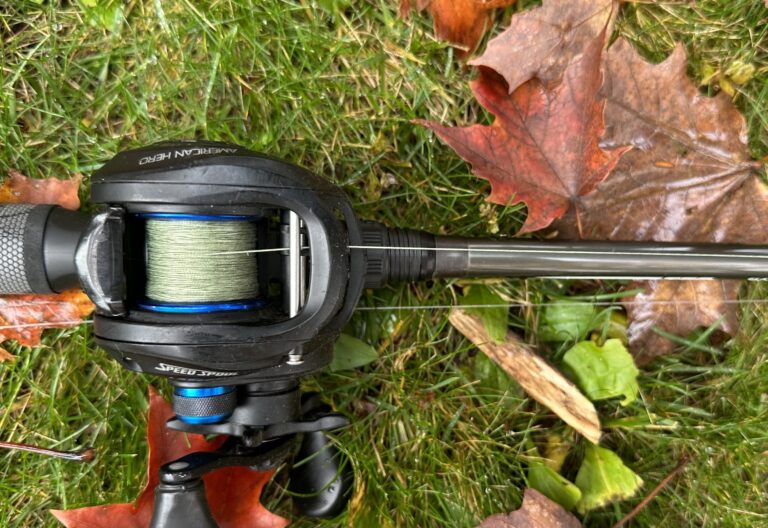The best length for a baitcasting rod depends on individual preferences and fishing conditions. A longer rod, around 7 to 8 feet, provides greater casting distance and control, while a shorter rod, around 6 to 7 feet, offers better accuracy and maneuverability in tight spaces.
Factors such as target species, casting technique, and fishing location also play a role in determining the ideal rod length. Ultimately, anglers should choose a baitcasting rod length that suits their fishing style and objectives. Longer rods are typically favored for open water fishing, while shorter rods are preferred for close-quarters or specific techniques like flipping and pitching.
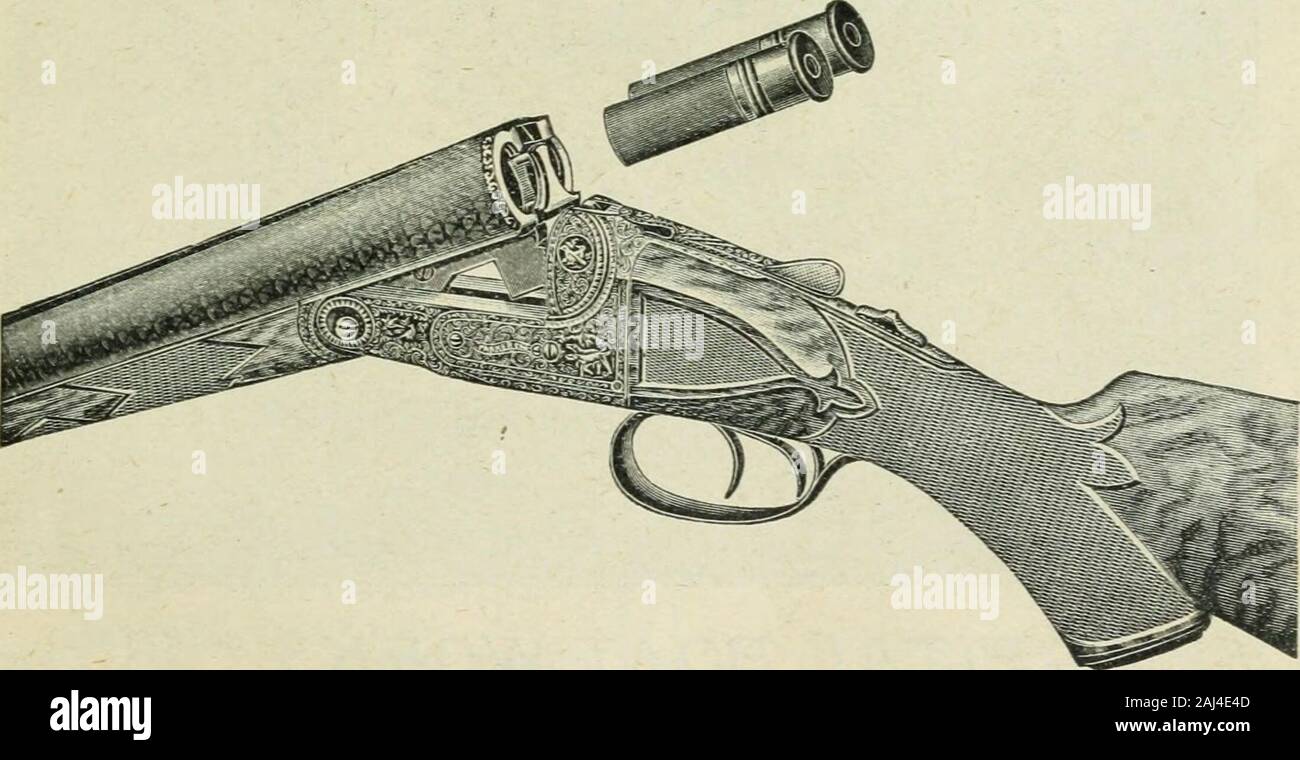
Credit: www.alamy.com
Understanding Baitcasting Rod Length:
When it comes to choosing the right baitcasting rod, one of the most important factors to consider is its length. The length of the rod plays a significant role in your overall fishing experience, affecting casting distance, accuracy, rod sensitivity, and the suitability for different fishing techniques.
Let’s dive deeper into the importance of rod length and the factors you should consider when making your selection.
Importance Of Rod Length In Baitcasting:
The length of a baitcasting rod can greatly impact your fishing performance. Here are key points to consider:
- Longer rods provide increased casting distance: A longer baitcasting rod allows you to cast your bait farther out into the water. This is especially beneficial when targeting fish that are positioned far from shore or in open water.
- Shorter rods offer improved accuracy: While longer rods excel at casting distance, shorter rods offer better accuracy. Their compact size allows for precise casting in tight spaces or when aiming for specific targets.
- Rod sensitivity is influenced by length: Rod sensitivity refers to your ability to detect subtle movements or bites. Generally, shorter rods offer better sensitivity as they provide direct contact with the bait and allow for more precise feedback on underwater activities.
- Different fishing techniques require specific lengths: Each fishing technique has its own optimal rod length. For example, shorter rods are ideal for techniques such as flipping and pitching, where precise casts are necessary, while longer rods are better suited for techniques like crankbait fishing or surfcasting.
Factors To Consider When Choosing The Length:
Now that you understand the importance of rod length in baitcasting, let’s explore the factors you should consider when making your choice:
- Target species and fishing location: Consider the size of the fish you’re targeting and the environment in which you’ll be fishing. Larger fish or fishing in open waters may require longer rods, while smaller fish or fishing in tight spaces may benefit from shorter rods.
- Personal preference and casting style: Your personal preference and casting style also play a role in determining the ideal rod length. Experiment with different lengths and see which one feels most comfortable and suits your casting technique.
- Fishing technique: As mentioned earlier, different fishing techniques require specific rod lengths. Research the techniques you plan to use and choose a rod length that aligns with those techniques.
- Physical ability and strength: Take into account your physical ability and strength when selecting a rod length. Longer rods can be more challenging to handle, especially for individuals with limited strength or mobility.
By taking these factors into consideration and understanding the impact of rod length on casting distance, accuracy, rod sensitivity, and fishing techniques, you’ll be well-equipped to choose the best baitcasting rod length for your needs. Happy fishing!
Pros And Cons Of Longer Baitcasting Rods:
Pros And Cons Of Longer Baitcasting Rods
When it comes to choosing the right baitcasting rod, length plays a crucial role in determining its performance. Longer baitcasting rods have their own set of advantages and disadvantages. Understanding these pros and cons can help you make an informed decision and select the best length for your baitcasting rod.
Advantages Of Longer Baitcasting Rods:
- Increased casting distance: One of the biggest advantages of longer baitcasting rods is their ability to cast lures farther. The additional length allows for a longer lever arm, enabling you to generate more power and achieve greater casting distances.
- Better line control: Longer baitcasting rods provide better control over the fishing line. With more length, the line travels along a larger arc, enhancing your ability to manipulate and control the lure. This increased control can be particularly beneficial when dealing with heavy cover or trying to finesse a lure.
- Improved leverage: Longer baitcasting rods offer improved leverage when fighting powerful fish. The additional length allows you to apply more pressure and exert greater control over the fish, reducing the risk of it breaking free. This can be advantageous when targeting larger species or fishing in challenging conditions.
Disadvantages Of Longer Baitcasting Rods:
- Reduced maneuverability: While longer baitcasting rods excel in casting distance and leverage, they can be less maneuverable compared to their shorter counterparts. The increased length can make it more challenging to navigate tight spots or to make accurate casts in confined areas. This reduced maneuverability may limit your versatility in certain fishing scenarios.
- Challenging for beginners: Longer baitcasting rods require more skill and technique to handle effectively. For beginners, the extra length can be overwhelming and make the learning curve steeper. It may take time to develop the necessary casting and control techniques needed to fully utilize a longer baitcasting rod. Consider your level of experience and comfort before opting for a longer rod.
Longer baitcasting rods offer distinct advantages in terms of casting distance, line control, and leverage. However, they also come with the trade-off of reduced maneuverability and can be more challenging for beginners to handle. Assess your fishing needs, skill level, and the fishing conditions to strike the right balance and determine the best length for your baitcasting rod.
Remember, understanding the pros and cons of longer baitcasting rods is essential to make an informed decision and optimize your fishing experience.
Pros And Cons Of Shorter Baitcasting Rods:
Baitcasting rods come in various lengths, each with its own set of advantages and limitations. Shorter baitcasting rods, typically ranging from 5’6″ to 6’6″, have their own unique benefits and drawbacks. Let’s take a closer look at the pros and cons of using a shorter baitcasting rod.
Advantages Of Shorter Baitcasting Rods
Shorter baitcasting rods offer several advantages that can improve your fishing experience, especially in certain situations. Here are the key benefits:
- Enhanced maneuverability: Shorter baitcasting rods provide enhanced maneuverability, allowing anglers to easily handle the rod and manipulate it to their advantage. This increased control makes it easier to cast accurately and precisely, particularly when fishing in tight spaces or dense vegetation.
- Ideal for close-quarters fishing: When you’re fishing in tight spaces such as overhanging vegetation or in small ponds or creeks, a shorter baitcasting rod is the perfect choice. Its compact size enables you to make accurate casts without worrying about hitting obstacles or getting tangled up in surrounding foliage.
- Suitable for beginners: Shorter baitcasting rods are often recommended for beginners or anglers who are new to baitcasting reels. The shorter length provides more control and makes it easier to learn the proper casting techniques. As a result, beginners can get the hang of baitcasting more quickly and enjoy a smoother learning curve.
Disadvantages Of Shorter Baitcasting Rods
While shorter baitcasting rods offer some distinct advantages, they also come with a few downsides to consider. Here are a couple of disadvantages:
- Limited casting distance: Due to their shorter length, baitcasting rods sacrifice some casting distance compared to their longer counterparts. If you need to cast over long distances, such as when targeting fish in open water, a shorter baitcasting rod may not be the most optimal choice.
- Reduced leverage: The shorter length of these rods can result in reduced leverage when fighting larger, more powerful fish. With less length to flex and absorb shock, it can be more challenging to control and land big fish effectively. It’s important to consider the type of fish you plan to target and the fighting power they possess before opting for a shorter baitcasting rod.
Shorter baitcasting rods offer enhanced maneuverability, making them ideal for close-quarters fishing and suitable for beginners. However, they do come with limitations, such as limited casting distance and reduced leverage when battling larger fish. Consider the specific fishing situation and your skill level before selecting the length of your baitcasting rod.
Finding The Right Rod Length For Specific Fishing Techniques:
Choosing The Optimum Length For Bass Fishing
Fishing for bass requires a specific rod length to ensure optimal performance and success. Here are the key points to consider when choosing the right length for bass fishing:
- Longer rods, typically around 7 to 8 feet, provide better casting distance and leverage. They allow you to cover more water and make long, accurate casts.
- Shorter rods, ranging from 6 to 7 feet, offer more control and precision. They are suitable for techniques that require accurate and targeted casts, such as flipping and pitching.
- Medium-length rods, between 6.5 and 7.5 feet, provide a balance between casting distance and control. They are versatile and can be used for a variety of bass fishing techniques.
Finding the optimum length for bass fishing depends on your preferred technique, fishing environment, and personal preference. Consider the following factors:
- Casting distance: If you frequently fish in open waters or need to reach distant spots, a longer rod may be the better choice.
- Accuracy and control: For techniques that require precise casting in tight spaces, such as fishing around cover or in dense vegetation, a shorter rod offers better control and accuracy.
- Fishing style: Some anglers prefer the versatility of medium-length rods, which can handle a range of techniques and fishing conditions.
Remember, the optimal rod length may vary depending on your individual preferences and fishing style. Experiment with different lengths to find what works best for you.
Selecting The Right Length For Freshwater Fishing
When it comes to freshwater fishing, selecting the right rod length can greatly affect your fishing experience. Here are the key points to consider when choosing the right length for freshwater fishing:
- Shorter rods, typically between 5 and 7 feet, are ideal for fishing in smaller bodies of water such as ponds, lakes, and streams. They offer better maneuverability and control in tight spaces.
- Longer rods, around 7 to 9 feet, are better suited for larger bodies of water like rivers or reservoirs. They allow for longer casting distances and provide more leverage when battling larger fish.
- Medium-length rods, ranging from 6 to 7.5 feet, offer a good balance between control and casting distance. They are versatile and can handle a variety of freshwater fishing techniques.
Consider the following factors when selecting the right rod length for freshwater fishing:
- Fishing technique: Different freshwater fishing techniques require different rod lengths. For example, if you primarily use spinning reels for finesse techniques, a shorter rod may be more suitable. Conversely, if you prefer baitcasting reels for techniques like flipping or frogging, a longer rod may be preferable.
- Target species: The size of the fish you typically target can also influence your rod length choice. If you usually target smaller fish like panfish, a shorter rod may suffice. However, if you often chase larger fish like bass or pike, a longer rod can provide more power and control.
Ultimately, the best rod length for freshwater fishing depends on your fishing style, target species, and the specific waters you fish in.
Matching Rod Length To Saltwater Fishing Needs
Saltwater fishing presents unique challenges, and the right rod length can make a significant difference. Here are the key points to consider when matching rod length to your saltwater fishing needs:
- Longer rods, typically ranging from 7 to 12 feet, are commonly used in saltwater fishing. They allow for longer casting distances, which is essential when targeting fish in open water or surf.
- Shorter rods, approximately 6 to 7.5 feet, are suitable for inshore saltwater fishing. They offer better control and maneuverability when fishing around structures like rocks, jetties, or docks.
- Medium-length rods, around 7 to 9 feet, provide versatility and can handle a variety of saltwater fishing techniques.
Consider the following factors when selecting the right rod length for saltwater fishing:
- Fishing technique: Different saltwater fishing techniques require different rod lengths. If you are trolling for pelagic species, a longer rod is preferable. On the other hand, if you are casting lures or bait from the shore, a shorter rod may be more suitable.
- Target species: The size and behavior of the fish you target in saltwater can influence rod length selection. If you primarily target smaller species like snook or redfish, a shorter rod may be sufficient. However, if you’re pursuing larger gamefish like tarpon or marlin, a longer rod can provide the necessary power and leverage.
Choosing the right rod length for saltwater fishing depends on your fishing technique, target species, and the specific saltwater environment you’ll be fishing in. Experimenting with different lengths can help you find the perfect rod for your saltwater adventures.
Why You Should Consider Rod Length Along With Other Factors:
Balancing Rod Length With Rod Power And Action:
To determine the best length for a baitcasting rod, you need to consider various factors that have an impact on its performance. One such important consideration is finding the right balance between rod length, power, and action. Here’s why it’s crucial to take all three into account:
- Rod length: The length of a baitcasting rod affects its casting distance, leverage, and overall control. Longer rods generally offer greater casting distance and leverage, making them ideal for fishing in open areas with large targets. However, shorter rods provide increased maneuverability and precision, which is beneficial when fishing around tight spaces or smaller targets.
- Rod power: The power of a baitcasting rod determines its ability to handle different lure weights and fish sizes. Rod power is typically classified as light, medium, medium-heavy, or heavy. Match the rod power with the target species you intend to catch. Light and medium power rods are suitable for smaller fish, while medium-heavy and heavy power rods are better suited for larger species.
- Rod action: The action of a baitcasting rod refers to how much it bends when pressure is applied to the tip. Faster action rods bend closer to the tip, while slower action rods bend throughout the lower half or even the entire length of the rod. Faster action rods provide better sensitivity and hook-set penetration, whereas slower action rods offer increased flexibility and forgiveness. Consider your fishing style and preferences when selecting the rod action.
Importance Of Considering The Target Species And Fishing Conditions:
When choosing the length of your baitcasting rod, it’s essential to consider the target species you’ll be pursuing and the fishing conditions you’ll encounter. Here’s why:
- Target species: Different fish have different behaviors, habitats, and feeding patterns. A shorter rod may be more suitable for species found in tight cover or structure-rich areas, where accuracy and precision are critical. Conversely, longer rods are advantageous when targeting species that require casting over greater distances or in open water.
- Fishing conditions: The environment in which you plan to fish plays a significant role in determining the ideal rod length. If you’ll be fishing in heavy cover, a shorter rod can help you navigate through vegetation or brush more easily. On the other hand, if you’ll be fishing in open water or in windy conditions, a longer rod can provide increased casting distance and better control over your lures.
Consider the target species and fishing conditions to choose a baitcasting rod length that optimizes your chances of success and enhances your overall fishing experience.
How Reel Type Influences Rod Length Selection:
The type of reel you plan to pair with your baitcasting rod also influences the ideal rod length. Here’s why reel type is an important consideration:
- Baitcasting reel: Baitcasting reels are known for their accuracy, control, and versatility. They work well with both long and short rod lengths, depending on your fishing style and target species. However, longer baitcasting rods are commonly preferred by anglers who prioritize casting distance, while shorter rods offer better maneuverability and control.
- Spinning reel: Spinning reels are popular for their ease of use and versatility. When using a spinning reel, shorter rods are generally recommended as they allow for better line control and casting accuracy. Additionally, shorter rods provide better balance with spinning reels and reduce tip weight for improved sensitivity.
Choose a baitcasting rod length that complements the reel type you’ll be using for the best overall performance and comfort during your fishing adventures.
Remember, when selecting the length of a baitcasting rod, it’s essential to balance rod length with rod power, action, the target species being pursued, the fishing conditions at hand, and the type of reel being used. Considering all these factors will help you make an informed decision and maximize your angling success.
Happy fishing!
Expert Recommendations For Baitcasting Rod Length:
Recommended Rod Lengths For Different Fishing Scenarios:
When it comes to choosing the best length for a baitcasting rod, it’s important to consider the specific fishing scenario you’ll be facing. The length of your rod can greatly impact your overall fishing experience, so here are some expert recommendations based on different scenarios:
- Top choices for bass fishing: When targeting bass, a medium to medium-heavy baitcasting rod is generally preferred. These lengths provide the necessary power and sensitivity to handle large bass and make accurate casts. The recommended lengths for bass fishing are typically between 6’6″ to 7’6″.
- Ideal lengths for trolling: Trolling requires a different approach compared to other fishing techniques. Longer baitcasting rods excel in this scenario as they allow for better control and enable you to cover a larger area while trolling. Experts recommend using baitcasting rods with lengths ranging from 7’6″ to 9′ for optimal trolling performance.
- Preferred rod lengths for specific techniques: Different fishing techniques call for different rod lengths to maximize your chances of success. Here are some recommendations for specific techniques:
- Flipping and pitching: For these close-quarters techniques, shorter baitcasting rods between 6’6″ to 7’6″ are preferred. They provide better maneuverability and allow for precise presentations in tight spaces.
- Frog fishing: When targeting bass with topwater frog lures, a longer rod with lengths ranging from 7′ to 7’6″ is recommended. The extra length helps in making long casts and provides the required leverage to set the hook effectively.
- Crankbait fishing: Medium to medium-heavy baitcasting rods with lengths between 7′ to 7’6″ are ideal for crankbait fishing. These lengths allow you to make accurate long-distance casts and effectively work the crankbait through the water column.
- Spinnerbait and chatterbait fishing: For these fast-moving techniques, a medium-heavy to heavy baitcasting rod with lengths ranging from 6’6″ to 7’6″ is preferred. These lengths provide the necessary strength and leverage to handle the heavier baits and quickly reel in the fish.
Remember, these are general recommendations, and personal preference should also be considered when choosing the right baitcasting rod length for your fishing needs. Take into account factors such as your fishing style, body size, and the specific characteristics of the waters you’ll be fishing in.
With the right rod length in hand, you’ll be better equipped to tackle any fishing scenario with confidence.
Finding Your Perfect Baitcasting Rod Length:
When it comes to baitcasting rods, finding the right length is crucial for optimizing your fishing experience. The length of a baitcasting rod affects various factors such as casting distance, accuracy, control, and overall comfort. To help you find your perfect baitcasting rod length, consider the following factors:
Assessing Your Personal Preferences And Fishing Style:
- Evaluate your fishing style: Assessing your fishing style is an essential step in determining the optimal rod length. Consider the type of fish you predominantly target and the techniques you employ.
- Casting distance: Longer rods generally offer greater casting distance, making them ideal for situations where you need to reach far-off targets. If you enjoy fishing in open waters or from shorelines with ample casting space, a longer rod might be suitable.
- Accuracy and control: Shorter rods provide better accuracy and control, making them a preferred choice for anglers who require precision casting or maneuvering through tight spaces. If you primarily fish in areas with dense cover or aim for specific targets, a shorter rod may be your best bet.
- Comfort: Comfort plays a significant role in your fishing experience. Consider the physical aspects of rod length, such as its weight and how it feels in your hands. A comfortable rod will help reduce fatigue during long fishing sessions.
Seeking Advice From Experienced Anglers:
- Talk to fellow anglers: Seek guidance from experienced anglers who have already gone through the process of finding the ideal baitcasting rod length. They can provide valuable insights based on their own experiences and knowledge.
- Join fishing forums and communities: Online fishing communities and forums are excellent resources for connecting with knowledgeable anglers. Ask questions, share your preferences, and gather recommendations to help in your decision-making process.
Considering Trial And Error To Find The Perfect Fit:
- Experiment with different lengths: Since personal preferences and fishing conditions vary, finding the perfect baitcasting rod length often involves some trial and error. Consider starting with a popular length that matches your fishing style and gradually experiment with shorter or longer rods.
- Rent or borrow rods: If you have the opportunity, renting or borrowing rods of different lengths can help you gauge their suitability firsthand. This hands-on experience will give you a clearer understanding of what feels most comfortable and effective for you.
- Practice and adapt: As you explore different rod lengths, practice casting and fishing techniques with each one. Observe the changes in your casting distance, accuracy, control, and overall enjoyment. Based on these observations, adjust your preferences and adapt to better suit your needs.
Finding the perfect baitcasting rod length is a personal journey that involves considering your preferences, seeking advice from experienced anglers, and allowing room for trial and error. Keep these factors in mind, and soon enough, you’ll discover the ideal rod length that enhances your fishing experience.
Happy angling!
Conclusion
Finding the right length for a baitcasting rod is crucial for enhancing your fishing experience. After exploring the various factors and considerations involved in selecting the best length, it is clear that it ultimately depends on your unique fishing style and preferences.
Shorter rods provide better accuracy and control, making them ideal for techniques like flipping and pitching. On the other hand, longer rods offer increased casting distance and leverage, suitable for techniques like long-distance casting and deep-sea fishing. Strike a balance between these factors.
Keep in mind your target species, fishing environment, and casting style. Remember, choosing the right length is not a one-size-fits-all scenario. Experimenting with different lengths will help you find the perfect one that suits your needs. So, get out there and put your newfound knowledge to the test, and watch as your fishing game improves with the ideal baitcasting rod length.
Happy fishing!

